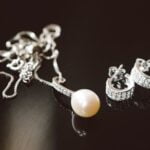Are you wondering how much are flowers for a wedding? Flowers play a significant role in setting the tone and enhancing the atmosphere of a wedding.
From the bridal bouquet to the venue decorations, flowers contribute to the overall vibe and aesthetic of the event, making them an essential element of any wedding celebration. In this article, we will delve into the factors that affect the cost of wedding flowers, popular flower options, average costs, budget-friendly alternatives, working with a florist, and additional costs to consider.
The cost of wedding flowers can vary greatly depending on several factors. Factors such as the types of flowers chosen, the season in which the wedding takes place, and the size of the wedding all play a crucial role in determining the overall cost. Understanding these factors will help couples make informed decisions when it comes to selecting their floral arrangements while staying within their budget.
When it comes to choosing flowers for your wedding, there is a wide range of popular options to consider. From classic choices like roses and peonies to more unique options like succulents and wildflowers, couples have plenty of beautiful options to choose from when it comes to creating their dream floral designs. It’s important to consider both personal preferences and practical considerations when selecting flowers for your big day.
Factors That Affect the Cost of Wedding Flowers
When it comes to planning a wedding, flowers are an essential element that can greatly contribute to the overall ambiance and aesthetic of the event. However, the cost of wedding flowers can vary widely depending on a number of different factors. Understanding what influences the price of floral arrangements can help couples make informed decisions when it comes to their budget and preferences.
1. Types of Flowers: The type of flowers chosen for a wedding can have a significant impact on the overall cost. Exotic or rare blooms are typically more expensive than common varieties. For example, roses and peonies are popular choices for weddings, but they tend to be pricier than daisies or carnations. Couples should consider their favorite flowers while also factoring in pricing when making selections.
2. Seasonal Availability: Another factor that affects the cost of wedding flowers is seasonal availability. Certain flowers may be more expensive if they are out of season or need to be imported from another region or country. Opting for in-season blooms can help reduce costs while still achieving a beautiful and cohesive look for the event.
3. Size of the Wedding: The scale of the wedding also plays a role in determining the cost of floral arrangements. Larger weddings with more guests typically require more elaborate and extensive floral designs, such as centerpieces, bouquets, boutonnieres, and aisle decorations. Couples should consider both the size of their venue and guest list when planning their floral budget.
Understanding how these various factors influence the cost of wedding flowers can help couples make informed decisions about their floral arrangements while staying within their budget constraints.
Popular Flower Options for Weddings
When it comes to choosing flowers for a wedding, couples have an array of options to consider. Traditional choices like roses and peonies are timeless and elegant, while more unique options such as succulents and wildflowers can add a touch of whimsy and personality to the event. The type of flowers you select can significantly impact the overall aesthetic and vibe of your wedding, so it’s essential to choose blooms that reflect your vision for the big day.
Roses are a classic choice for weddings, symbolizing love and romance. These versatile flowers come in a variety of colors, making them suitable for any wedding palette. Peonies are another beloved option, known for their lush, full blooms and soft, delicate petals. Many couples opt for peonies in shades of white or blush for a romantic, ethereal feel.
For those looking to add a modern twist to their floral arrangements, succulents have gained popularity in recent years. These hardy plants come in an array of shapes and sizes and can be used in bouquets, centerpieces, and even as unique boutonnieres. Wildflowers are another charming choice for couples who want to bring a natural, rustic feel to their wedding. With their untamed beauty and vibrant hues, wildflowers are perfect for outdoor or bohemian-themed weddings.
As you explore various flower options for your wedding, keep in mind that the availability of certain blooms may fluctuate depending on the season. Working with your florist to select flowers that are in season can help you stay within budget while still achieving the desired look for your special day.
| Flower Option | Description |
|---|---|
| Roses | A classic choice symbolizing love and romance; available in various colors. |
| Peonies | Lush blooms with delicate petals; perfect for romantic, ethereal aesthetics. |
| Succulents | Modern choice with diverse shapes; suitable for bouquets or centerpieces. |
| Wildflowers | Natural charm with vibrant hues; ideal for outdoor or bohemian-themed weddings. |
The Average Cost of Wedding Flowers
When it comes to planning a wedding, one of the key elements that couples often consider is the cost of flowers. From bouquets for the bride and her bridal party to centerpieces for the reception tables, floral arrangements play a significant role in creating a beautiful and memorable atmosphere for the event. However, understanding the average cost of wedding flowers can be essential in managing overall expenses.
Bouquets
Bridal bouquets are typically one of the most important floral arrangements at a wedding. The cost of a bridal bouquet can vary depending on factors such as the types of flowers used, size, and complexity of design. On average, couples can expect to spend anywhere from $100 to $350 for a bridal bouquet. Bridesmaid bouquets may range from $50 to $100 each, depending on similar factors.
Centerpieces
Centerpieces are another significant aspect of wedding floral décor. The cost per centerpiece can fluctuate based on the size and complexity of the arrangement as well as the types of flowers and greenery incorporated into the design. For standard floral centerpieces, couples can anticipate spending between $75 to $250 per piece.
Floral Décor
In addition to bouquets and centerpieces, floral decorations throughout the wedding venue also contribute to the overall costs. This may include floral arches or chuppahs for ceremonies, aisle markers or pew arrangements for ceremonies held in houses of worship, as well as additional decor for cocktail hour areas or cake table displays. Depending on scale and detail, these elements could add an extra few hundred dollars up to a couple thousand dollars toward your total flower budget.
Understanding these estimated costs is helpful for couples in managing their budget effectively while still achieving their desired aesthetic vision for their special day. Even with these breakdowns per category, remember that working with a florist who understands your vision and needs is crucial in ensuring you get an accurate estimate that aligns with your unique requirements.
Budget-Friendly Alternatives
When it comes to planning a wedding, flowers can be a significant expense. However, there are several budget-friendly alternatives that couples can consider to help reduce the overall cost of wedding flowers. By thinking creatively and exploring alternative options, couples can still achieve a beautiful and impactful floral aesthetic for their special day without breaking the bank.
DIY Arrangements
One budget-friendly option for couples is to consider creating their own floral arrangements. This could include everything from bouquets and boutonnieres to centerpieces and ceremony decor. While DIY arrangements will require some time and effort, they can be a great way for couples to save money while adding a personal touch to their wedding decor. Additionally, by enlisting the help of friends and family members, couples can turn the process into a fun pre-wedding activity.
Using in-Season Flowers
Another way to save on wedding flowers is to opt for in-season blooms. Flowers that are in season are generally more readily available and less expensive than those that are out of season.
By selecting flowers that are naturally abundant during the time of your wedding, you can take advantage of lower prices while still achieving a stunning floral display. Additionally, working with your florist to understand what flowers are in season during your wedding month can help you make informed decisions about your floral selections.
Opting for Greenery or Non-Traditional Floral Options
In addition to traditional blooms, couples may want to explore non-traditional options such as greenery or alternative plant materials like succulents or dried flowers. Incorporating lush greenery into bouquets and centerpieces is not only trendy but also tends to be more cost-effective than using large quantities of flowers. Similarly, choosing unique elements like succulents or dried flowers as part of your floral decor can add a distinctive touch while keeping costs down.
By getting creative with their flower choices and being open-minded about non-traditional options, couples on a budget can still achieve a beautiful and memorable floral aesthetic for their wedding day without overspending.
Working With a Florist
When planning your wedding, finding the right florist is crucial in bringing your floral vision to life. A skilled and experienced florist can help guide you through the process of selecting flowers that complement your theme and color scheme, all while staying within your budget. But with so many options out there, how do you go about finding the perfect florist for your special day?
First and foremost, it’s important to do your research. Look for florists who specialize in weddings and have a portfolio that showcases their work. Reading reviews from past clients can also give you insight into their level of service and attention to detail. Once you’ve narrowed down potential florists, schedule consultations to discuss your vision and get a sense of their expertise and creativity.
Communication is key when working with a florist. Be clear about your likes and dislikes, show inspiration photos, and be open to their suggestions based on seasonal availability or cost-effective alternatives. Setting a budget from the start will help manage expectations and prevent overspending. A reputable florist will respect your budget while still delivering stunning arrangements.
Understanding pricing is another important aspect of working with a florist. Be sure to ask for a detailed breakdown of costs including bridal party bouquets, centerpieces, ceremony flowers, delivery fees, and any additional charges related to installation or set-up. Transparency in pricing will help avoid any surprises when it comes time to finalize the contract.
Lastly, don’t forget to inquire about any additional costs that may come into play – delivery fees, set-up charges, taxes – these are all important factors that should be factored into your overall floral budget as they can significantly impact the total cost of wedding flowers.
| Florist Tips | Importance |
|---|---|
| Do Your Research | Finding the right fit for your wedding |
| Clear Communication | Manifesting vision accurately within budget constraints |
| Understanding Pricing | Avoiding unexpected financial surprises at contract time |
Additional Costs to Consider
When budgeting for wedding flowers, it’s important to consider not only the cost of the actual blooms but also any potential additional expenses that may come up. These extra charges can add up quickly and significantly impact the overall cost of floral arrangements for the big day.
Here are some potential additional costs to consider when planning for wedding flowers:
- Delivery Fees: Many florists charge a separate fee for the delivery of wedding flowers to the ceremony and reception venues. This cost can vary depending on the distance traveled and the size of the order.
- Set-Up Charges: Some florists may also charge a set-up fee to arrange and display the floral dcor at both venues. This fee covers the labor involved in setting up and styling the flowers to ensure everything looks perfect on the day of the wedding.
- Taxes: It’s important to factor in taxes when budgeting for wedding flowers. Depending on your location, you may need to account for sales tax or other applicable fees, which can impact your overall floral budget.
By taking these additional costs into consideration from the start, couples can avoid unexpected expenses and ensure that their floral budget accurately reflects what they can expect to pay. Working closely with a trusted florist and clearly communicating about all potential costs will help to create a transparent understanding of what is included in your floral package.
Ultimately, understanding and planning for these additional costs associated with wedding flowers can help couples stay within their desired budget while still achieving their dream floral arrangements for their special day.
Conclusion
In conclusion, the cost of wedding flowers can vary widely depending on a variety of factors such as flower type, season, and the size of the wedding. It’s important for couples to carefully consider their budget and explore different options to ensure that they achieve the desired floral aesthetic without breaking the bank.
By understanding the average costs of wedding flowers, exploring budget-friendly alternatives, and working closely with a florist, couples can make informed decisions that align with their financial constraints while still creating a beautiful atmosphere for their special day.
When considering how much are flowers for a wedding, it’s crucial to remember that there are various ways to save money without sacrificing style and elegance. Choosing in-season flowers, utilizing greenery or non-traditional floral options, and even opting for DIY arrangements are all viable strategies for reducing costs while still achieving a stunning floral display.
Additionally, developing a clear vision and open communication with your chosen florist is essential in ensuring that both parties are on the same page regarding expectations and budget limitations.
Ultimately, navigating the cost of wedding flowers requires thoughtful planning, creativity, and flexibility. By carefully considering all available options and being mindful of potential additional costs such as delivery fees or taxes, couples can successfully incorporate beautiful floral elements into their wedding day while staying within their financial means. With some foresight and smart decision-making, couples can create a memorable and visually striking event without overspending on floral arrangements.
Frequently Asked Questions
What Is a Normal Budget for Wedding Flowers?
The normal budget for wedding flowers can vary widely depending on various factors such as the size of the wedding, the types of flowers chosen, and the arrangements desired. On average, couples spend around 8-10% of their total wedding budget on flowers.
Is $5000 Enough for Wedding Flowers?
While $5000 can certainly go a long way in covering wedding flower expenses, it ultimately depends on the couple’s specific floral vision and the scope of their wedding. Factors such as the season, location, and types of flowers selected will all impact how far $5000 can stretch when it comes to wedding flowers.
Is $1000 Enough for Wedding Flowers?
With a budget of $1000 for wedding flowers, couples may need to prioritize where they allocate their funds. Simple and elegant floral arrangements with seasonal blooms or even DIY options could be viable choices for staying within this budget. Close communication with a florist will be crucial in making the most out of a $1000 budget for wedding flowers.

Welcome to my blog about home and family. This blog is a place where I will share my thoughts, ideas, and experiences related to these important topics. I am a stay-at-home mom with two young children. I hope you enjoy reading it! and may find some helpful tips and ideas that will make your home and family life even better!





